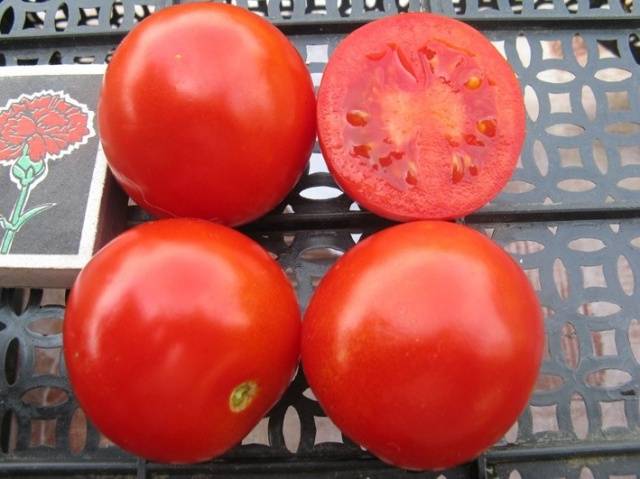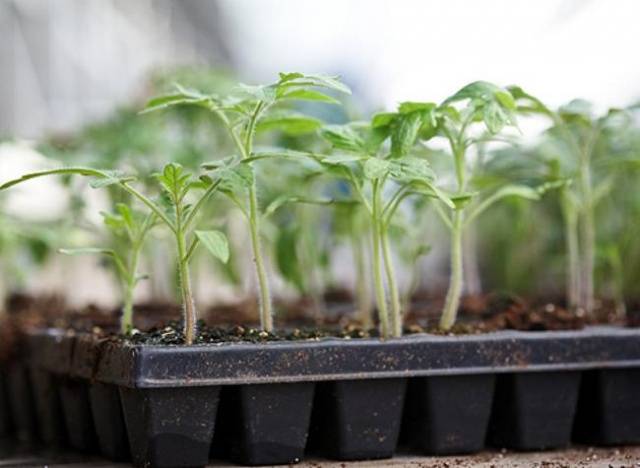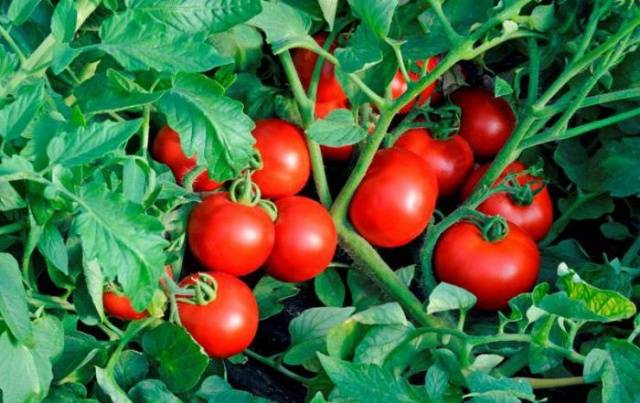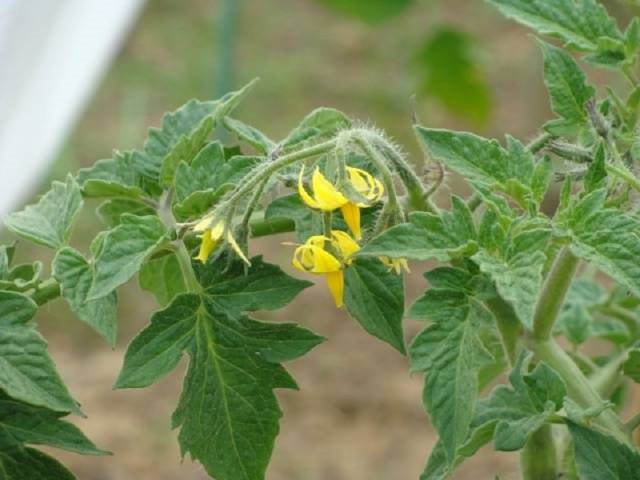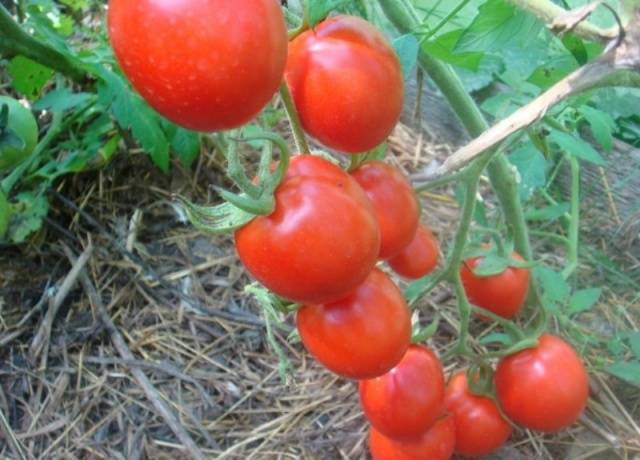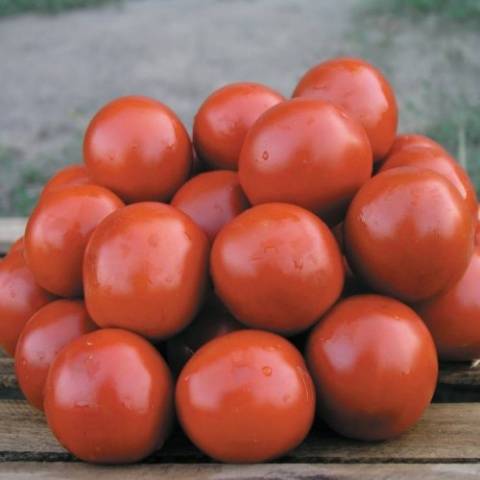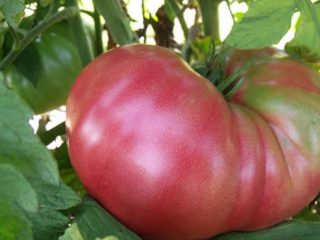Content
The Solerosso tomato was bred in Holland in 2006. The variety is distinguished by early ripening and high yield. Below is a description and reviews of the Solerosso F1 tomato, as well as the order of planting and care. The hybrid is used for planting in temperate or warm climates. In cold regions, it is grown in a greenhouse method.
Variety characteristics
The description of Solerosso tomato is as follows:
- early maturation;
- after planting the seeds, it takes 90-95 days to ripen the fruit;
- determinant bush;
- 5-6 tomatoes are formed on the brush;
- average spreading of the bush.
The Solerosso fruit also has a number of distinctive features:
- the average size;
- flat-rounded shape;
- slight ribbing next to the peduncle;
- juicy pulp of moderate density;
- on average 6 seed chambers are formed;
- thin, but fairly dense skin;
- sweet taste without wateriness.
Variety yield
The Solerosso variety is considered a high-yielding variety. Up to 8 kg of tomatoes are removed from one square meter.
The fruits of the variety are smooth and small in size. The dense skin allows you to use them in homemade preparations. Tomatoes are suitable for pickling and pickling as a whole.
Tomatoes of this variety are included in assorted vegetables, mashed potatoes and pastes. Fresh they are added to salads, first and second courses.
Landing order
The Solerosso variety is suitable for growing outdoors or in greenhouses. Regardless of the method chosen, you first need to get healthy seedlings. Young plants are planted in prepared areas, which are fertilized with peat or humus.
Getting seedlings
Tomato Solerosso F1 can be grown in seedlings. This will require a soil consisting in equal proportions of garden soil and humus.
It is recommended to treat the soil before planting seeds. It is watered with hot water or a weak solution of potassium permanganate.
To obtain seedlings, low containers are required. They are filled with soil, after which furrows are made to a depth of 1 cm.It is recommended to plant tomatoes every 2 cm.
Containers with seeds are poured over with warm water and covered with glass or foil on top. The first few days they are kept in the dark. The ambient temperature should remain at 25-30 degrees. At lower rates, the seedlings of Solerosso tomatoes will appear later.
Seedlings are formed in the presence of good lighting for 12 hours a day. Fitolamps are installed if necessary. Plants are watered with warm water every week. When the tomatoes have 4-5 leaves, moisture is applied every 3 days.
Transfer to the greenhouse
Solerosso tomatoes are transferred to the greenhouse when they are 2 months old. The height of the seedlings will reach 25 cm, and 6 leaves will form on the stem.
A greenhouse for planting crops is prepared in the fall. It is recommended to replace the top layer of soil, since insect larvae and disease spores often spend the winter in it.
The soil for a greenhouse with tomatoes is formed from several components: sod land, peat, humus and sand. Best of all, this culture grows on light fertile soils, with good moisture permeability.
According to the description, the Solerosso tomato is determinant, therefore 40 cm is left between the plants.If you plant Solerosso tomatoes in a checkerboard pattern, you can significantly simplify their care, provide ventilation and normal development of the root system.
Tomatoes are moved into the ground along with a lump of earth. Then the root system is covered with earth and the bush is spud. Abundant watering of the plantings is mandatory.
Outdoor cultivation
2 weeks before planting, tomatoes are moved to a balcony or loggia. At first, the plants are kept at a temperature of 16 degrees for several hours, gradually this period is increased. This is how the tomatoes are hardened and their survival rate in a new place improves.
Landing is performed when the soil and air are warmed up. To protect tomatoes from spring frosts, you need to cover them after planting with an agricultural canvas.
Tomatoes are planted in holes located at a distance of 40 cm from each other. 50 cm is left between the rows. A support must be organized so that the plants do not suffer from wind and precipitation. After transferring the plants, they are watered with warm water.
Care features
The Solerosso variety is looked after by applying moisture and fertilizers. These tomatoes do not need pinching. Tomatoes must be tied to form a straight and strong stem and to avoid the fruit coming into contact with the ground.
Watering tomatoes
With a moderate introduction of moisture, the Solerosso F1 tomato gives stable high yields. For tomatoes, soil moisture is maintained at 90%.
The lack of moisture is evidenced by drooping tomato tops. Prolonged drought leads to the dropping of inflorescences and ovaries. Excess moisture also negatively affects plants that develop slowly and become susceptible to fungal diseases.
The first watering of the Solerosso variety is carried out after the tomatoes are transferred to a permanent place. Then the procedure is repeated every week. During the flowering period, the plants require more intensive watering, so 5 liters of water are added under each plant.
The procedure is carried out in the morning or in the evening, when there is no direct exposure to the sun. After watering, the soil is loosened so that the tomatoes better absorb moisture and nutrients.
Top dressing
With regular feeding, the Solerosso variety gives a stable yield. From fertilizers, both minerals and folk remedies are suitable.
The main trace elements that contribute to the development of tomatoes are phosphorus and potassium. Potassium is responsible for the taste of the fruit, and is used in the form of potassium sulfate (30 g per 10 L of water). The solution is poured over the plantings under the root.
Phosphorus regulates metabolic processes in the plant organism, therefore, the normal development of tomatoes is impossible without it. This trace element is introduced in the form of superphosphate, which is diluted with water (40 g of substance per 10 l of water). Superphosphate can be embedded in the soil under the root of tomatoes.
Of the folk remedies, the most effective is feeding tomatoes with wood ash. It can be introduced into the soil when planting tomatoes or prepared on its basis for irrigation infusions.
Protection against diseases and pests
According to reviews, the Solerosso F1 tomato is resistant to the main diseases of tomatoes. Due to early ripening, the plant does not undergo the most dangerous tomato disease - phytophthora.
Adherence to agricultural practices, timely watering and feeding of plants will help to avoid the development of diseases. The greenhouse with tomatoes must be ventilated to prevent high humidity.
In the open field, Solerosso tomatoes are attacked by hoists, slugs, thrips, and a bear. Insecticides are used to control pests.A solution of ammonia is effective against slugs, and a solution of laundry soap is prepared against aphids.
Gardeners reviews
Conclusion
The Solerosso variety is suitable for growing both on private plots and on an industrial scale. These tomatoes are distinguished by early ripening, good taste and high productivity. Planting requires a minimum of maintenance, which includes watering and feeding. According to reviews, delicious preparations are obtained from Solerosso F1 tomatoes.
